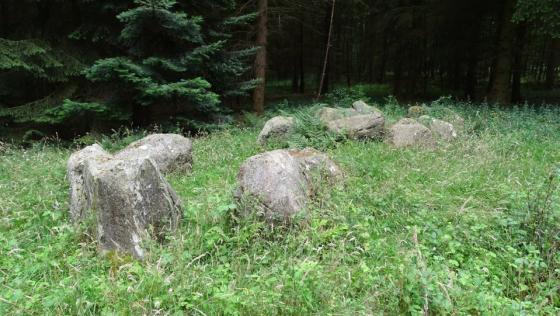taken from the “Faszination Archäologie” information board:
“Visbek Bride”
Neolithic megalithic tomb
The “Visbek Bride” is considered the second largest Hunebed in the Wildeshauser Geest. It is in a relatively good state of preservation. On the other hand, the magnificent south-western narrow side, which is made up of almost 3m high boulders, is probably not the original situation. Probably at this point in the 19th century, the original capstones of the chamber were erected. The curious name “bride” presumably results from the pre-Christian custom to celebrate central events such as weddings on megalithic tombs.
The legend of “Bride and Bridegroom”
Since the 18th century at the latest, people have told each other that the “Visbek Bride” and her 4km “Visbek Bridegroom” were in fact a petrified wedding party. According to the legend, she had to turn to stone, because the bride believed that she can only escape in this way the marriage established by the father with the unloved bridegroom.
Testimony of sedentary life
Megalithic tombs like the “Visbek Bride” are considered the oldest surviving structures of northern Central Europe. Until the fourth millennium BC only hunters and gatherers lived in the Wildeshauser Geest. Only the “funnel beaker culture” (about 3500 – 2700 BC) settled down permanently.
They bred cattle, planted grain and lived in post constructions. Presumably, they believed in an otherworldly life and therefore built their deceased sometimes monumental graves of boulders. Those megalithic graves or megalithic tombs (Greek: mega = large, lithos = stone) were erected not for individuals, but for groups and used over many generations.










































